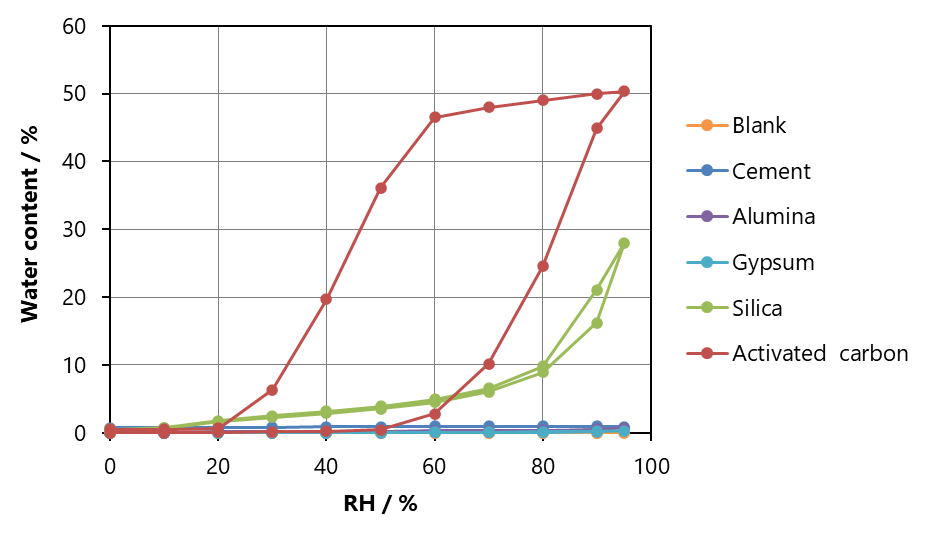Vapor sorption: DVS (dynamic) and SVS (static-volumetric)
The determination of water uptake and -release is highly important for a lot of products for their application, their behavior in processes or storage issues. Water uptake can be determined as a function of relative humidity. In other projects water or other vapors are used as sensors to investigate the interaction between molecules with different polarities and surfaces and compare these interactions with other molecules. Due to practical reasons the properties of porous materials under humid conditions have to be well known. Different prospects are possible to investigate the sorption behavior of gas-vapor or vapor-vapor mixtures.
Measuring methods
1. Dynamic vapor sorption – DVS
Water vapor sorption follows the same physical rules and principles as gas sorption. The difference to gas sorption is that condensation of vapors must not influence the results of the measurement. Because of this reason, the water uptake is often measured gravimetrically in a dynamic, humid gas flow (DVS – Dynamic Vapor Sorption) – these experiments can be carried out for many materials, such as pharmaceutical products, food, packing materials, building materials etc.

2. Static-volumetric vapor sorption
Water vapor sorption can also be measured static-volumetrically in a measuring system with calibrated volume by measuring the equilibrium pressure. Corresponding analyzers exhibits a heated volume system, so that condensation in the manifold, valves or lines is avoided. The liquid is stored in a glass-vessel, which is connected to the manifold with a valve/line-system. First the glass-vessel is evacuated to remove the air then the desired vapor phase is build up above the liquid phase. Dosing of this vapor into the measuring cell removes vapor from the manifold, more liquid from the glass-vessel is evaporated until the equilibrium state between liquid and gas phase is reached again.
Determination of the water sorption isotherm (ad- and desorption) are carried out fully automatically and different possibilities are offered for the analysis of isotherms: Determination of surface areas, pore volumes or heats of adsorption.
3. Mixture adsorption of vapors
Another possibility is the determination of the sorption behavior of vapors in gas-vapor or vapor-vapor mixtures with the mixSorb S and mixSorb L series. Practical questions can be directly studied, e.g. investigation of the sorption behavior of humid adsorbents in a dry gas flow or the sorption behavior of adsorbents under a humid gas-vapor flow. There is a huge difference between these two cases and both experiments can easily be prepared. Such investigations can be done flexibly with the mixSorb series including the coupling to external analytical devices to determine e.g. trace elements.